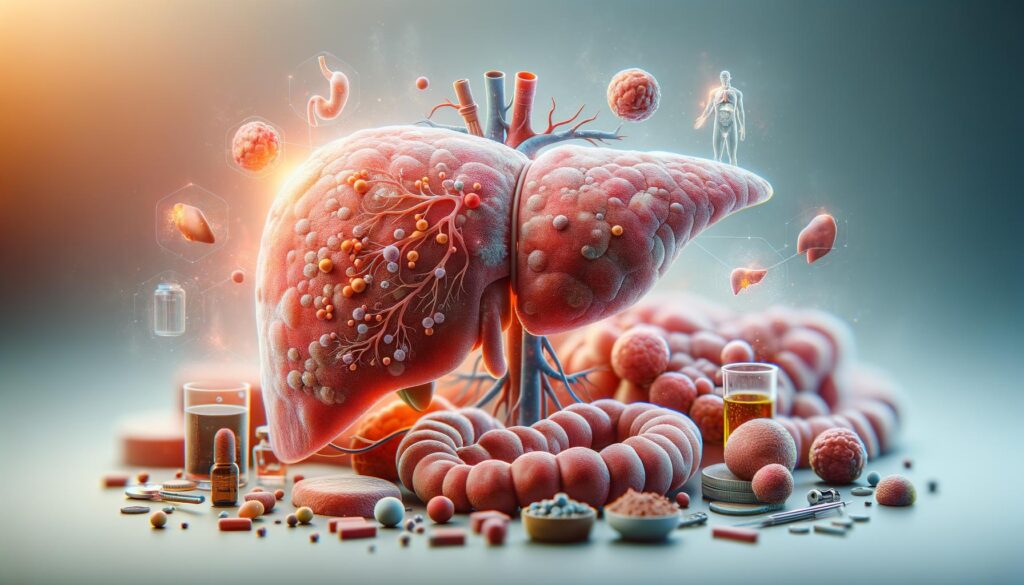Understanding Fatty Liver Cirrhosis: A Comprehensive Overview

What is Fatty Liver Cirrhosis?
Fatty liver cirrhosis is an advanced stage of liver disease where liver damage has progressed far beyond simple fat accumulation. It typically follows a condition known as fatty liver disease, characterized by excess fat in liver cells. Over time, persistent liver damage can lead to inflammation, fibrosis, and eventually cirrhosis, where the liver becomes scarred and its function severely compromised. Unlike other liver diseases, fatty liver cirrhosis can occur without alcohol consumption, often linked to metabolic syndrome, obesity, and type 2 diabetes.
Causes and Risk Factors
Fatty liver cirrhosis is multifactorial, emerging from various underlying causes and risk factors. Some of the primary contributors include:
- Nonalcoholic Fatty Liver Disease (NAFLD): This occurs when fat builds up in the liver without the influence of alcohol.
- Alcoholic Liver Disease: As opposed to NAFLD, this occurs due to excessive alcohol consumption, leading to fat build-up and liver damage.
- Metabolic Syndrome: A cluster of conditions that raises the risk for heart disease, stroke, and type 2 diabetes.
- Obesity and Type 2 Diabetes: Both conditions are risk factors due to their role in fat accumulation in the liver.
It’s important for individuals to recognize their risk factors as early diagnosis and management can prevent disease progression.
Symptoms and Diagnosis
Fatty liver cirrhosis often remains asymptomatic in early stages, but as it progresses, symptoms may become more apparent. Common signs include fatigue, weakness, weight loss, and jaundice. Advanced stages can lead to more severe symptoms such as abdominal swelling, confusion, and even liver failure.
Diagnosis typically involves a combination of blood tests, imaging studies like ultrasound or a CT scan, and sometimes a liver biopsy. Blood tests may reveal elevated liver enzymes, while imaging studies can showcase the extent of liver damage and fat accumulation. A liver biopsy, though more invasive, confirms cirrhosis and helps in determining the specific cause.
Treatment Options
The treatment of fatty liver cirrhosis focuses on managing symptoms and addressing the underlying causes to prevent further liver damage. Key approaches include:
- Lifestyle Modifications: Weight loss and regular physical activity are crucial, particularly for those with obesity or metabolic syndrome.
- Dietary Changes: A balanced diet low in processed foods and high in fruits, vegetables, and lean proteins supports liver health.
- Medication: While no specific medication cures cirrhosis, treating underlying conditions like diabetes and high cholesterol can help.
- Avoidance of Alcohol: Essential for those with alcohol-related liver disease and beneficial for those with NAFLD.
In severe cases, a liver transplant may be necessary when liver function is critically impaired.
The Importance of Regular Monitoring
Regular monitoring of liver health is essential for individuals with fatty liver cirrhosis. This includes routine check-ups and imaging tests to track the progression of liver damage. Early detection of complications such as liver cancer or variceal bleeding can significantly improve outcomes through timely intervention.
Patients should work closely with healthcare providers to manage risk factors effectively. This cooperative approach helps in maintaining liver function and slowing down the progression of the disease.
Conclusion
Fatty liver cirrhosis is a complex condition that necessitates a multifaceted approach for effective management. By understanding the condition’s causes, symptoms, and available treatments, individuals can make informed decisions about their health. Collaboration with healthcare providers, alongside lifestyle modifications, plays a vital role in preventing complications and maintaining quality of life. Continuous learning and adaptation are key in managing this chronic liver disease.
